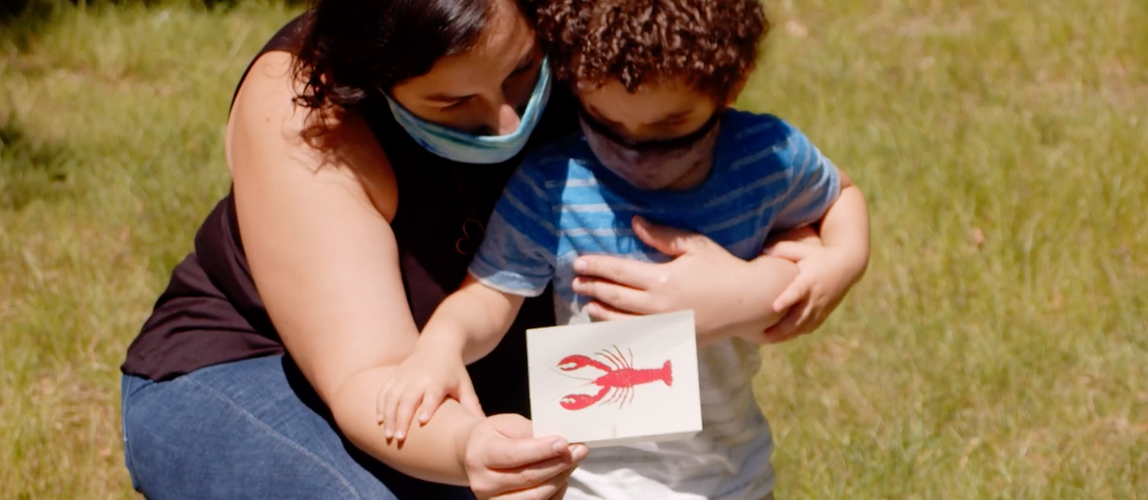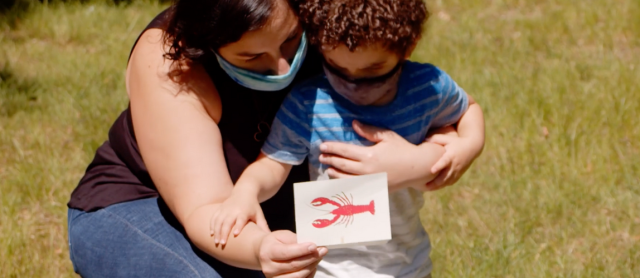
Most summers, the night we do a lobster dinner (it’s a whole thing) and the next-day lobster rolls are a highlight. This year, lobsters will be important in our family—and at Tinkergarten—all summer and beyond. Lobsters are going to teach our kids how to social distance. As you prepare for whatever you have on deck this summer, we hope lobsters can help your family too!
How Lobsters Became Our Teachers
As a parent, I needed to help my young kids learn to stay 6 feet from humans they love. As an educator, I needed to design lessons to help kids play and learn together while maintaining distance.
The design requirements in both cases were the same: Kids had to be together with people they love and with friends; kids had to learn to maintain distance, and kids had to feel great about it—not just be “unharmed” but great, in control, playful and joyful. Sounds like a tall order, but that is just the kind of design challenge I love.
The answer? I know that animals make powerful allies for children. So, the key was to find an animal that could help me teach kids to back up and keep their distance. It turns out, lobsters can move backward even faster than they move forward. As the Wild Kratts team would say, that is one super cool “creature power.”
How to Teach Kids to Lobster
Give them the right introduction, and lobsters can start helping right away:
1. Look at pictures of lobsters and/or watch some clips of lobsters in motion. If screens are active in your house, Watch a PBS Kids Wild Kratts episode about Lobsters or watch real like lobsters in St. Maarten here! In Tinkergarten class, each child gets a personalized note from a lobster!
2. Ask kids what they notice and what seems special about lobsters.
3. Share “I learned something about lobsters that I think is amazing; do you want to hear? Lobsters can move as fast backward as they can move forward! I know I can’t do that!”
4. Try it yourself! “Want to try to lobster walk?!” As you pretend to move like lobsters, it’s fun for kids who are really steady on their feet to feel how much harder it is to go fast backward as humans. Don’t forget to add in some pretend claws as you play!
5. Suggest another lobster walk a few times a day for a while—and stay silly with it.
6. Reinforce it. Eventually, you can say things like, “Hey, let’s take a little lobster walk…” or even just quietly make a pinching-claws motion with a wink, and kids will back right up.
See the lobster walk in action here!
Why Lobsters Make Such Great Teachers
First and foremost, we know little kids can learn this—coming to understand and respect others’ and our own personal space is a fundamental lesson of early childhood. And even very young kids can get behind the reason we are doing this: to keep ourselves and our friends safe. But, reason alone won’t do the trick, since the actions required to keep distance are opposite from what kids are used to. Plus, little kids are still learning impulse control. Kids need reminders and plenty of practice to get this down.
By learning to walk backward like lobsters, we give our kids a fun and imaginative way to practice backing up—just enough to make their bubbles a bit bigger. Kids can have a blast practicing lobster walks before they even get into a new social situation. Even more importantly, we have a way to give our kiddos the reminders they need once we are in a social situation—and a reminder that is kid-friendly, non-shaming, and super fun.
This summer, no matter what you do, put lobster on your menu of teaching tools—and just watch. Who knew that what could look like nagging could turn into joyful, creature-inspired play—and the chance for you to breathe a little while kiddo gets to be safe outdoors with friends and family again!











